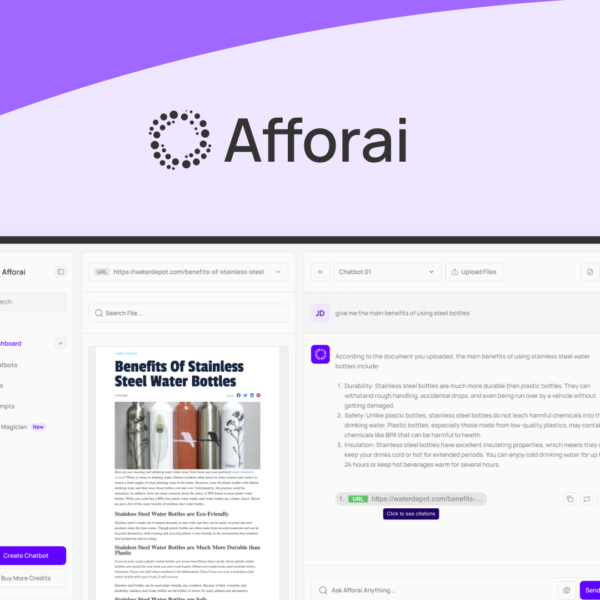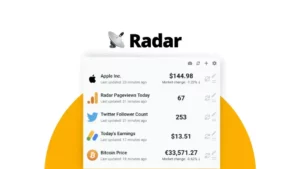Free sales software can significantly enhance your business efficiency by automating tasks, managing customer relationships, and providing valuable sales insights. By choosing the right tools and effectively integrating them into your workflow, you can maximize productivity and drive growth without extra costs.
Finding the right sales software free can elevate your business efficiency and tracking capabilities. In a world where competition is fierce, leveraging free tools becomes essential for small businesses aiming for growth without breaking the bank. This article explores the best options available, highlighting their benefits, and guides you in selecting what’s right for your unique needs.
Top Sales Software Free Tools
When searching for sales software free, you’ll discover a range of tools designed to help businesses streamline their sales processes. These solutions are diverse, offering various features that cater to different business needs and sizes.
1. HubSpot CRM
HubSpot offers a robust free CRM that allows you to manage sales pipelines, track deals, and gain insights into your sales performance. With user-friendly features, it enables teams to collaborate effectively and enhance customer relationships.
2. Zoho CRM
Zoho CRM provides a free version that includes lead management, workflow automation, and real-time reporting. It’s particularly beneficial for small businesses looking to automate their sales processes without incurring costs.
3. Freshsales
Freshsales offers a free tier that allows users to manage contacts, track sales activities, and access intuitive dashboards. This tool is ideal for startups that need an efficient way to manage their sales cycles.
4. Bitrix24
With Bitrix24, teams can access a comprehensive free CRM system that includes sales automation, collaboration tools, and communication features. This tool is especially useful for remote teams and helps maintain productivity.
5. Agile CRM
Agile CRM’s free plan provides essential tools for managing customer interactions and sales pipeline tracking. Features such as email tracking and contact management make it a valuable tool for growing businesses.
Benefits of Using Free Sales Software

Utilizing free sales software can provide several key benefits for businesses, especially for startups and small enterprises looking to enhance their sales processes without a hefty investment. These tools can help increase efficiency, clarity, and overall success in sales endeavors.
1. Cost Savings
The most obvious benefit of using free sales software is the cost savings it brings. These tools enable businesses to access powerful features without the need for a subscription, allowing resources to be allocated elsewhere.
2. User-Friendly Interfaces
Many free sales software options are designed with ease of use in mind. This means quicker onboarding for teams and minimal training required. Sales representatives can begin using the software effectively almost immediately.
3. Basic Features for Essential Needs
Free sales software often includes essential features like contact management, lead tracking, and basic analytics. These tools can fulfill the fundamental needs of small businesses and help them organize their sales efforts efficiently.
4. Scalability
Using free software allows businesses to test and adapt their structured processes as they grow. As needs change, companies can upgrade to premium features or switch to paid software without the fear of being locked into a costly contract from the start.
5. Increased Productivity
With the automation of routine tasks and better organization through these tools, sales teams can focus on building relationships and closing deals instead of getting bogged down in administrative work. This leads to improved productivity and higher sales performance.
How to Choose the Best Free Sales Software
Choosing the right free sales software can significantly impact your business’s efficiency and performance. With various options available, here are some steps to ensure you select the best fit for your team’s needs.
1. Identify Your Requirements
The first step is to determine what features you need most. Consider what tasks you want the software to handle, such as lead tracking, reporting, or customer interaction. Creating a list of must-have features helps narrow your options.
2. Assess User-Friendliness
Look for software that is easy to use for your entire team. A user-friendly interface means less training time, allowing your team to get started quickly. Opt for solutions that offer intuitive designs and clear navigation.
3. Consider Integrations
Compatibility with other tools is essential. Ensure that the sales software can seamlessly integrate with your existing systems, like email platforms and customer service tools. This helps create a cohesive workflow and enhances productivity.
4. Review Customer Support
Even with free software, support options are crucial. Check if the software provider offers help through tutorials, FAQs, or a support team. Reliable customer support can save time during setup and troubleshooting.
5. Read User Reviews
User feedback provides insight into the software’s strengths and weaknesses. Explore reviews and customer testimonials to understand how others have benefited from the software and any issues they faced. This feedback will guide your decision.
Integrating Free Sales Software into Your Business

Integrating free sales software into your business can transform how you manage sales processes. To start the integration smoothly, follow these steps.
1. Assess Current Processes
Before implementing any new software, review your current sales processes. Identify what works well and what needs improvement. Understanding your existing workflow will help tailor the software to fit your needs.
2. Set Clear Goals
Define what you aim to achieve with the new software. Whether it’s improving lead tracking, enhancing customer communication, or automating routine tasks, having clear goals will guide your implementation process.
3. Train Your Team
Training is vital for effective integration. Provide your team with the necessary training to use the software confidently. This might include tutorials, workshops, or hands-on sessions to ensure everyone understands the features and functionalities.
4. Start with a Pilot Program
Implement the software on a smaller scale initially. A pilot program allows you to test features, gather feedback, and make necessary adjustments without disrupting your entire sales workflow.
5. Monitor and Optimize
After the software is in use, continuously monitor its performance. Collect feedback from your team about their experiences and make adjustments as needed. Optimization is key to ensuring that the software meets your goals.
Maximizing Your Efficiency with Sales Software Free
Maximizing your efficiency with sales software free involves using the available features effectively to streamline your sales processes. Here are strategies to get the most out of these tools.
1. Utilize Customer Relationship Management (CRM) Features
Leverage the CRM capabilities of your sales software to manage customer interactions. Keeping track of leads, appointments, and follow-ups ensures you adhere to sales schedules and maintain communication.
2. Automate Repetitive Tasks
Many free sales software programs offer automation features. Identify repetitive tasks that can be automated, such as sending follow-up emails or scheduling reminders. This saves time and allows you to focus on more important sales activities.
3. Analyze Sales Data
Use the analytics features to track sales performance over time. Understanding what works well will help you refine your strategies. Focus on metrics like conversion rates and lead responses to fine-tune your approach.
4. Train Your Team on Best Practices
Ensure your team is well-trained on how to use the software efficiently. A knowledgeable team can fully utilize the software’s functionalities, resulting in improved productivity and better sales outcomes.
5. Regularly Update Your Process
As your business grows, periodically revisit and upgrade your processes. Regularly check if you need additional features or if other software options better align with your evolving needs. Staying adaptable will maximize efficiency in the long run.
In Conclusion: Unlocking Success with Free Sales Software
Free sales software can be a game changer for businesses, helping to improve efficiency and streamline processes. By understanding how to choose the right tools, integrating them effectively, and maximizing their features, companies can boost productivity and drive sales.
As you explore options, remember to assess your team’s needs and goals. Using available benefits, such as automation and analytics, will empower your sales strategies and enhance your overall performance.
Embrace the opportunities that free sales software presents and watch your business thrive!
FAQ – Frequently Asked Questions about Free Sales Software
What is free sales software?
Free sales software refers to tools that help businesses manage their sales processes without any cost. They often have essential features to track leads, manage customer relationships, and analyze data.
How can I benefit from using free sales software?
Using free sales software can save you money while providing essential tools to improve efficiency, automate tasks, and gain insights from sales data.
What features should I look for in free sales software?
Look for user-friendly interfaces, customer relationship management (CRM) capabilities, integration options, analytics tools, and automation features.
Is training necessary for my team to use free sales software?
Yes, training is important to ensure your team can effectively use the software and fully utilize its features for optimal productivity.
How can I integrate free sales software into my existing processes?
Start by assessing your current processes, set clear goals, train your team, and consider a pilot program to test the software before a full rollout.
Are there any limitations to free sales software?
Yes, free sales software may have limitations such as fewer features, user restrictions, or limited customer support compared to paid versions.




